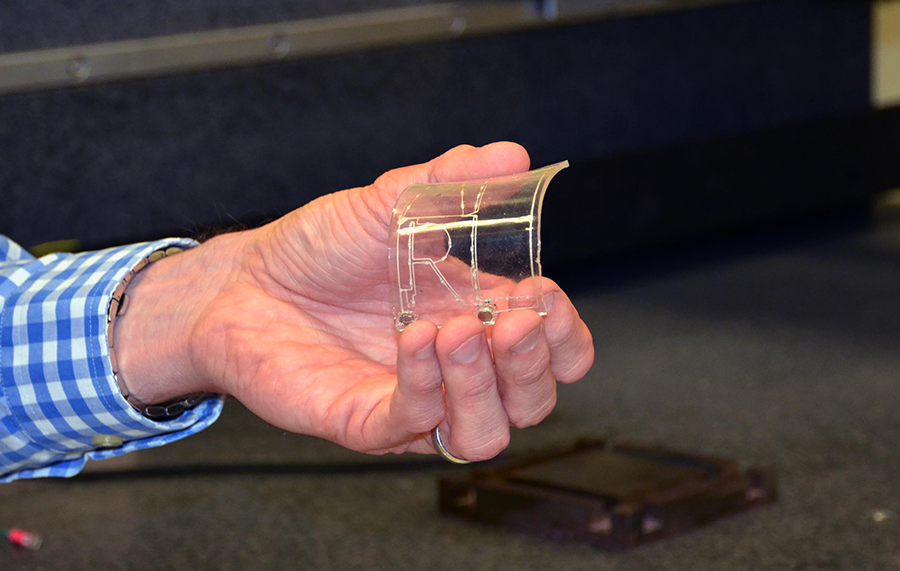Future wearables for measuring biological signs such as heart rate or blood pressure will come in the form of flexible electronic devices, because they are lightweight, can bind to human skin and can tolerate mechanical deformation. However, most of these devices are bulky and rely on external power source to operate. Sungjun Park of the Center for Emergent Matter Science (CEMS) in Japan, and colleagues have developed ultraflexible biosensors powered by ultrathin solar cells, which can be used to monitor heart rate.
Related Scientists Create Solar Supercapacitors Which Could Power Future of Wearable Sensors
The integration of ultraflexible power sources and sensors may potentially revolutionize the technology of self-powered conformable biosensors for applications in wearable electronics and diagnostics.
For their study, the team combined solar cells, known as organic photovoltaic (OPV) cells with electronic devices called organic electrochemical transistors (OECTs). The OPV cells and OECTs were fabricated on an ultrathin substrate made of parylene, a type of plastic.
The team revealed that the OPV cells could convert up to 10.5 percent of the energy received from light into electricity – which is among the highest reported values of power-conversion efficiency for ultraflexible devices.

Usually, flexible OPV cells are less efficient than their rigid counterparts, which use more-established fabrication processes. The researchers overcame this drawback by introducing zinc oxide structures into the OPV cells. The nanometer-scale patterns of these structures facilitated electron transport in the OPV cells, maximizing their efficiency.
A blank DVD was used to produce the nanopatterns. Park and colleagues first replicated the DVD’s nanopatterns onto an elastic stamp, and then used this stamp to produce nanopatterns on the OPV cells by employing a technique known as soft lithography.
Related Microscopic Photonic Biosensor allows real-time oxygen monitoring In Organ-on-a-chip Systems
To demonstrate that their self-powered sensing platform can detect biological signals, the researchers attached it to a person’s finger and a gel electrode to the person’s chest. With every heartbeat, a voltage difference between the electrode and the platform was produced due to the movement of ions through the individual’s body.
The researchers discovered that, under a constant illumination from light-emitting diodes, the platform recorded clear heart-rate signals. As the absence of external power connections decreased signal fluctuations, the recording sensitivity was about 3 times higher than that of conventionally powered OECTs.
The study was published in the journal Nature.












